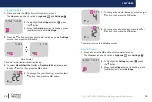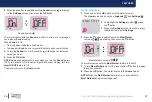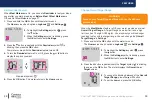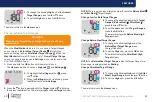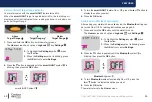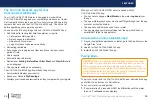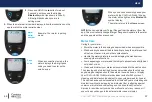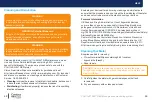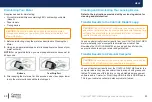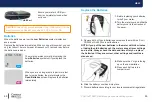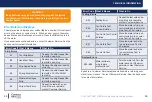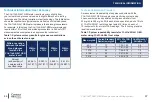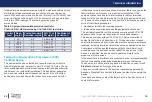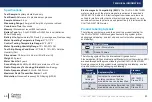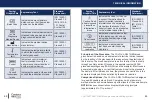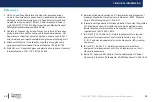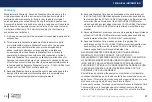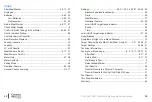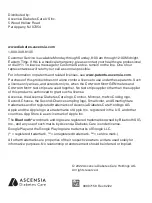
62
63
C
ontour
®
n
ext
GEN blood glucose monitoring system
TECHNICAL INFORMATION
Symbol
Graphic/Title Explanatory Text
Standard
Reference
6-8
Batch Code
Indicates the manufacturer’s
batch code so that the medical
device can be identified.
ISO 15223-1,
Clause 5.1.5
IEC 61010-2-
101, Table 1,
Symbol 102
In Vitro
Diagnostic
Medical Device
Indicates a medical device that is
intended to be used as an in vitro
diagnostic medical device.
ISO 15223-1,
Clause 5.5.1
Manufacturer
Indicates the medical device
manufacturer.
ISO 15223-1,
Clause 5.1.1
Temperature
limit
Indicates the temperature limits
to which the medical device can
be safely exposed.
ISO 15223-1,
Clause 5.3.7
Control
Indicates a control material
that is intended to verify the
performance characteristics of
another medical device.
ISO 15223-1,
Clause 5.5.2
Consult
instructions
for use
Indicates the need for the user to
consult the instructions for use.
ISO 15223-1,
Clause 5.4.3
Symbol
Graphic/Title Explanatory Text
Standard
Reference
6-8
Caution: Read
all warnings and
precautions
in instructions
for use
Indicates the need for the user
to consult the instructions for
use for important cautionary
information such as warnings and
precautions that cannot, for a
variety of reasons, be presented
on the medical device itself.
ISO 15223-1,
Clause 5.4.4
IEC 61010-1,
Table 1,
Symbol 14
Do not re-use
Indicates a medical device that
is for single use or for use on
a single patient during a single
procedure.
ISO 15223-1,
Clause 5.4.2
Sterilized using
irradiation
Indicates a medical device
that has been sterilized using
irradiation.
ISO 15223-1,
Clause 5.2.4
Principles of the Procedure: The
C
ontour
n
ext
GEN blood
glucose test is based on measurement of electrical current caused
by the reaction of the glucose with the reagents on the electrode of
the test strip. The blood sample is drawn into the tip of the test strip
through capillary action. Glucose in the sample reacts with FAD
glucose dehydrogenase (FAD-GDH) and the mediator. Electrons are
generated, producing a current that is proportional to the glucose in
the sample. After the reaction time, the glucose concentration in the
sample is displayed. No calculation by the user is required.
Comparison Options: The
C
ontour
n
ext
GEN system is designed
for use with capillary whole blood. Comparison with a laboratory
method must be done simultaneously with aliquots of the same sample.
NOTE: Glucose concentrations drop rapidly due to glycolysis
(approximately 5%–7% per hour).
9

